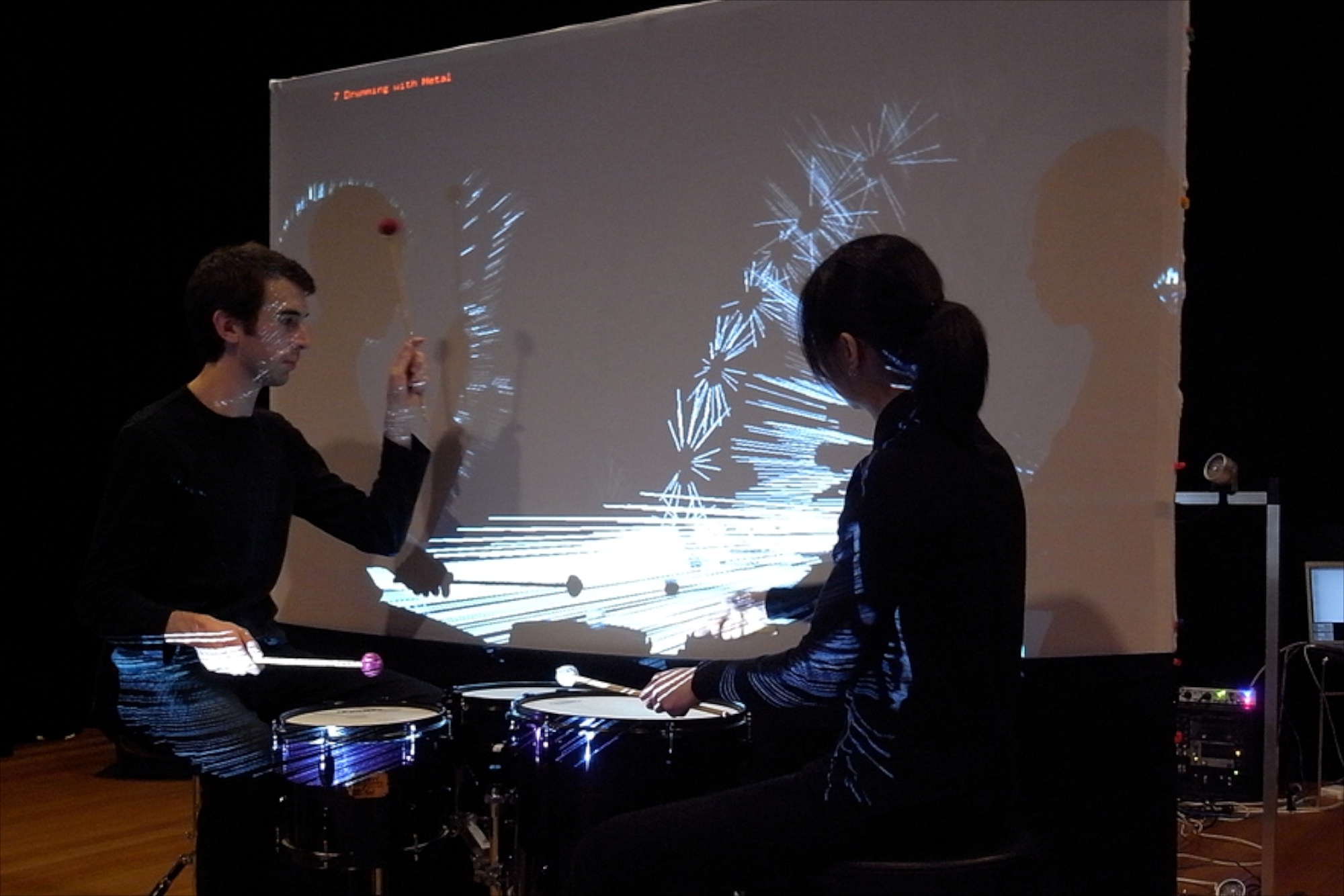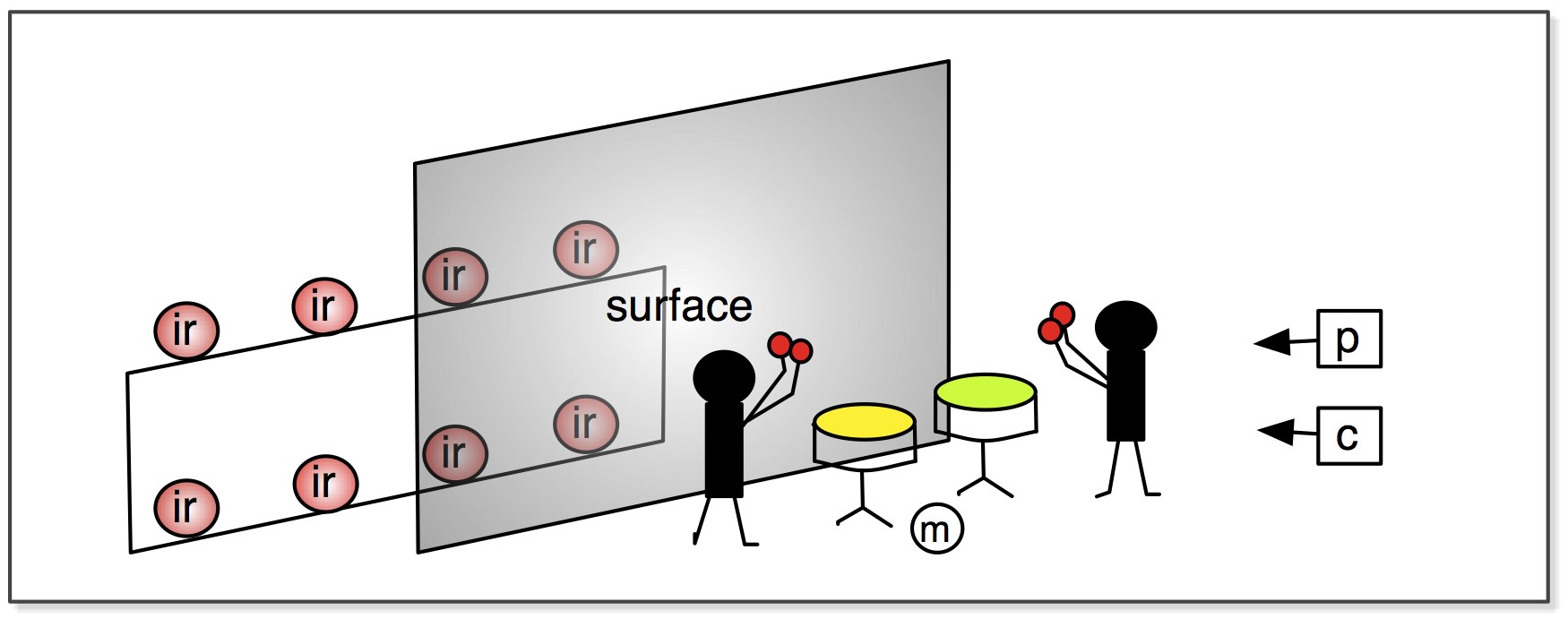Strike on Stage

Charles Martin and Chi-Hsia Lai Striking on Stage
Strike on Stage is a percussion and multimedia performance created by Charles Martin and Chi-Hsia Lai in Canberra in 2010. Through creative integration of their body movements and audio/visual processing and projection these two artists are breaking new ground in media and percussion performance.
Embracing the video screen as a new instrument in their percussive vocabulary, Lisa and Charles use computer vision technology to track their shadows cast during the performance. Visual tracking adds a new dimension to their contemporary improvised performance, not only can they extend the sound of their acoustic percussion instruments using computer based processing, but new sounds can be created through gestures that respond to images on the screen.
Strike on Stage was created in 2010, supported by an ArtsACT Project Funding Grant. The work was presented at Belconnen Arts Centre in Canberra, at the NIME2010 and ACMC2010 conferences in Australia, NIME2011 in Oslo and in Piteå, Sweden at the 2011 Percussion Repertoire Festival.
The Setup

Diagram of the performance setup.
 The stage setup for Strike on Stage at Belconnen Arts Centre, Canberra.
The stage setup for Strike on Stage at Belconnen Arts Centre, Canberra.
The stage setup for Strike on Stage is centred around a large projection screen made from thin fabric. The performers and percussion instruments are set directly in front of the screen and the projection is made from the front so that it covers both the screen and the performers. Eight infrared lights illuminate the screen from behind to create a silhouette of the performers and instruments which is invisible to the audience but can be picked up by an infrared camera. The signal from this camera is used to create interactive visualisations and trigger sounds.
Overview Video
Paper
C. Martin and C. Lai, “Strike on stage : a percussion and media performance,” in Proceedings of the international conference on new interfaces for musical expression, Oslo, Norway, 2011, pp. 142-143. www.nime.org/proceedings/2011/nime2011_142.pdf